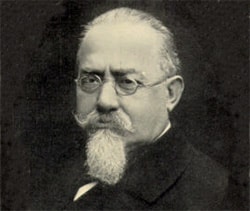Meet the Materialists, part 4: Cesare Lombroso and the New School of Criminal Anthropology
Note: This is one of a series of posts adapted from my new book, Darwin Day in America. You can find other posts in the series here.

By the end of the nineteenth century, American scholars were already talking with excitement about the “new school of criminal anthropology” that sought to use modern science to identify the causes of crime. Leading the way was Italian criminologist Cesare Lombroso (1835-1909), whose book Criminal Man (1876) remains a landmark work in the field of criminology. Lombroso and his disciples contended that criminal behavior could be explained largely as a throwback to earlier stages of Darwinian evolution.
According to Lombroso, infanticide, parricide, theft, cannibalism, kidnapping, theft and anti-social actions can all be found throughout the animal kingdom, as well as among human savages. In earlier stages of development such behaviors aided survival and were therefore bred into animals by natural selection. As William Noyes, one of Lombroso’s American disciples, explained, “in the process of evolution, crime has been one of the necessary accompaniments of the struggle for existence.” While crime no longer served a necessary survival function in civilized societies, many modern criminals could be considered atavists—reappearances of characteristics from earlier stages of evolutionary development. According to Lombroso, such atavists were “born criminals,” exhibiting from birth the physical as well as behavioral characteristics of savages. Physical markers of such individuals included “abundant hair,” “sparse beard[s],” “enormous frontal sinuses and jaws,” “broad cheekbones,” a “retreating forehead,” and “volumnious ears.”
Read More ›




































